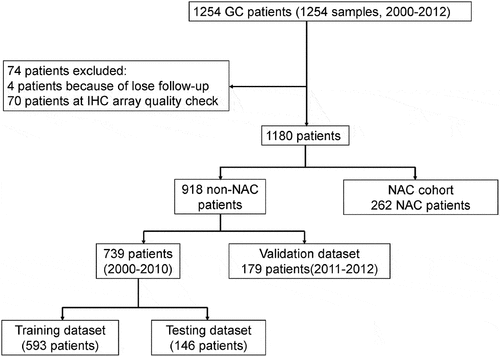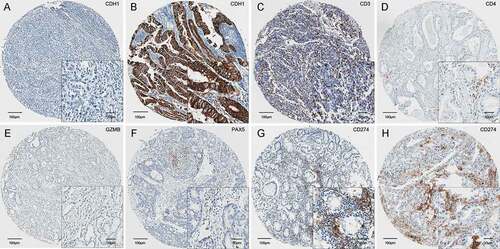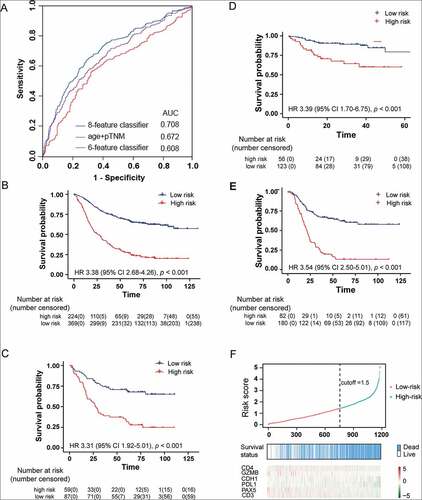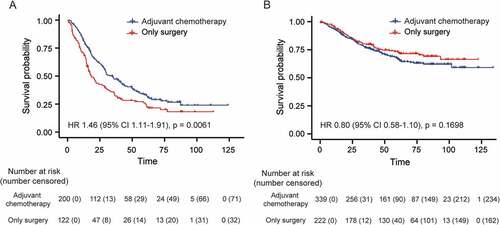Figures & data
Table 1. Clinical characteristics of patients in the training, testing, and validation sets.
Figure 1. Outline of the overall study flow. Assignment of gastric cancer patients into subgroups based on surgery times and treatments to construct and validate the prognostic classifier. Patients were divided into training, testing, and validation set and NAC cohort.

Figure 2. Six features in the protein expression based classifier, including CDH1 (a and b), and five immunomarkers CD3 (c), CD4 (d), GZMB (e), PAX5 (f), and CD274 (g and h). CDH1 were recognized as negative or positive. The immunomarkers were quantified automatically.

Figure 3. Identification and validation of the integrative prognostic gastric cancer classifier. (a) The receiver-operating characteristic (ROC) curve of the training set. Patients of the training set (b), testing set (c), internal validation set 1 (d) and neoadjuvant chemotherapy (NAC) cohort (e) were classified into high- and low-risk groups using the classifier. The Kaplan-Meier estimates of overall survival for the two groups are shown. (f) The prognosis score distribution, prognosis prediction using the classifier, the overall survival status, and the expression profile of the molecular features of all the 1180 patients involved in the study.

Table 2. Cox regression analysis of overall survival in the training and testing sets.

